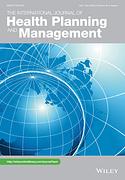Technical efficiency analysis of advanced medical centers in Burkina Faso
11 octobre 2024




Guillon M., Audibert M., Mathonnat J. (2022) Efficiency of district hospitals in Zimbabwe: Assessment, drivers and policy implications, International Journal of Health Planning and Management, vol 37(1), January